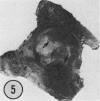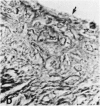Abstract
Seventy-four acetabula from a total of 140 normal human fetuses, obtained from abortions and deaths in the prenatal period, were used. The fetuses ranged from 9.1 to 40 cm in crown-rump length and are believed to be between 12 weeks and term. Acetabula were decalcified embedded in paraffin or celloidin, sectioned, and stained using conventional histologic techniques. Sections from the superior one-quarter of the acetabulum were examined for the initial appearance and later spread of osseous tissue. Throughout the fetal period bone was present only in the floor of the acetabulum and did not extend into the socket walls. Ossification was detected initially more posteriorly in the socket floor, and at all ages, ossification was more prominent on the ischial side of the socket. Despite the lack of osseous tissue a well-formed hyaline cartilage socket was present. The fetal labrum was composed of fibrous tissue with the density of fibers increasing with age. Typical-appearing chondrocytes were detected at only the inner articular margin of the labrum. Contributing from one-fifth to one-half of the socket depth, the labrum may play a greater role in containing the femoral head at birth than it does in the mature joint. In seven acetabula, from joints that were neither subluxated nor dislocated, an area of areolar tissue with capillaries was detected at the hyaline cartilage-labrum junction. Such defects may weaken the labrum and contribute to neonatal hip instability.
Full text
PDF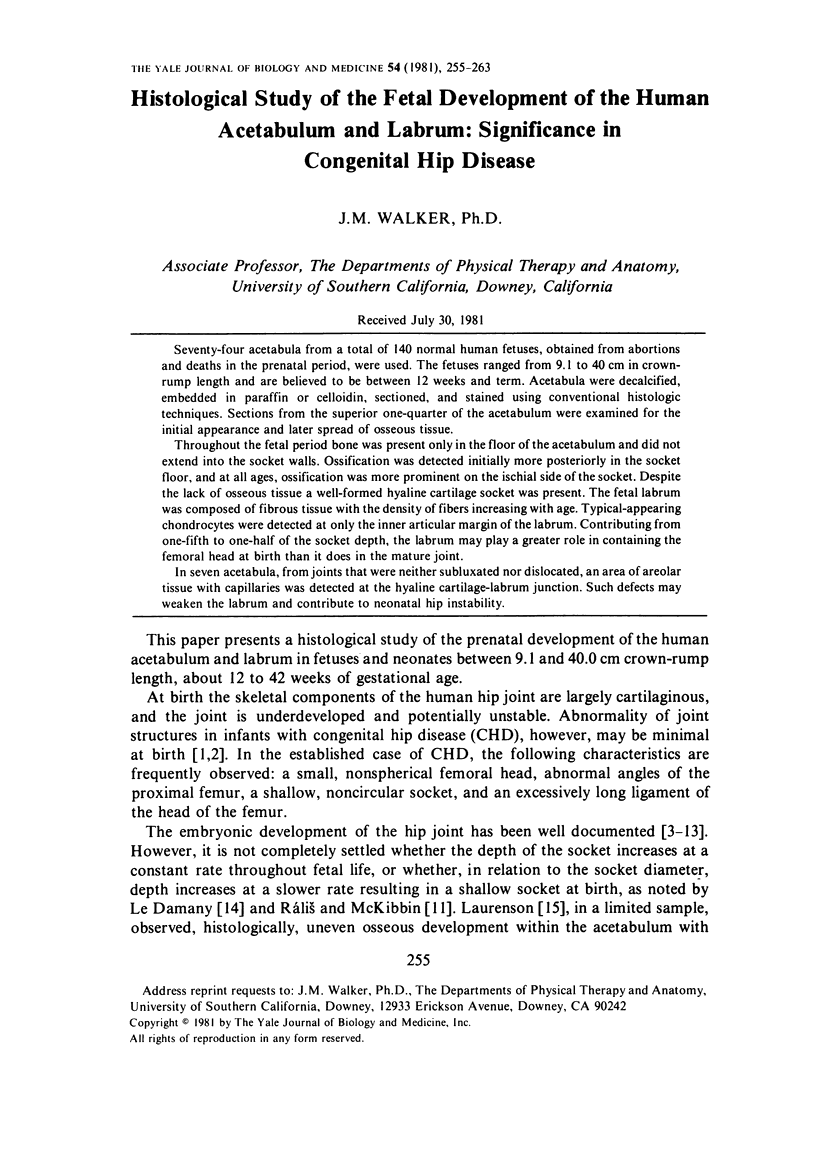
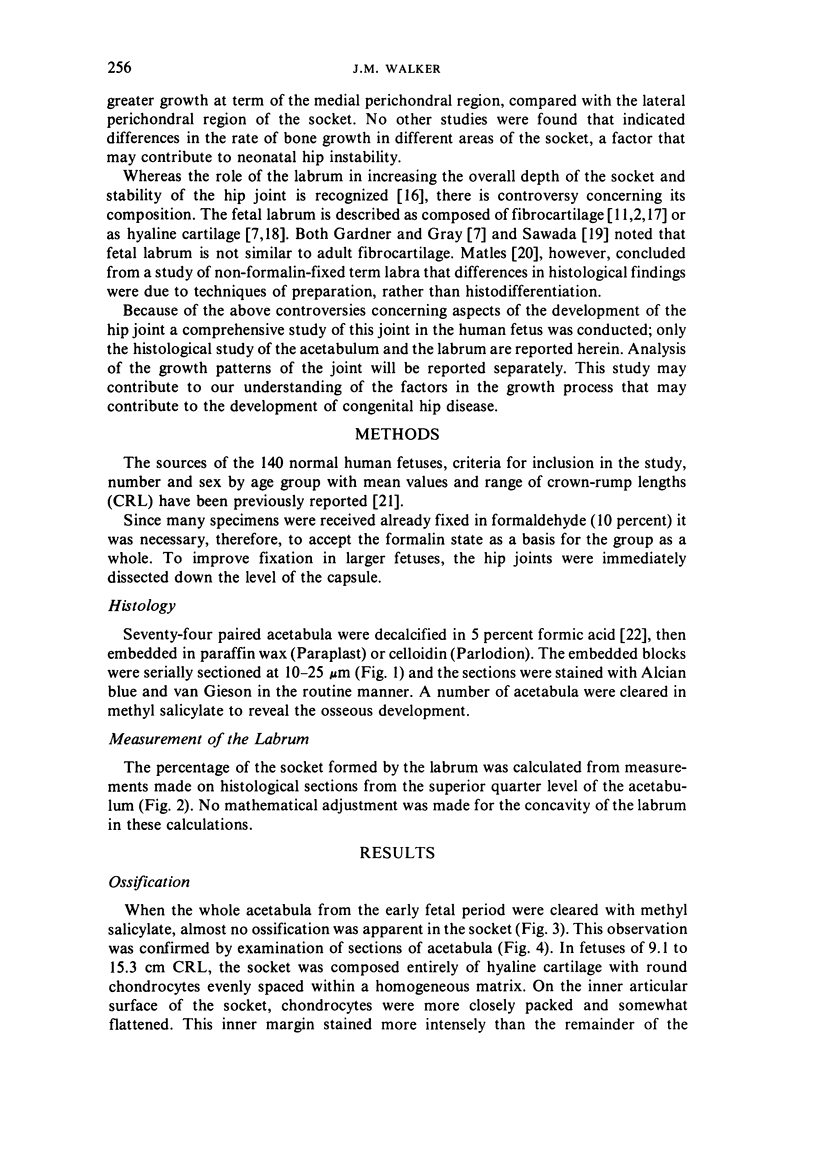
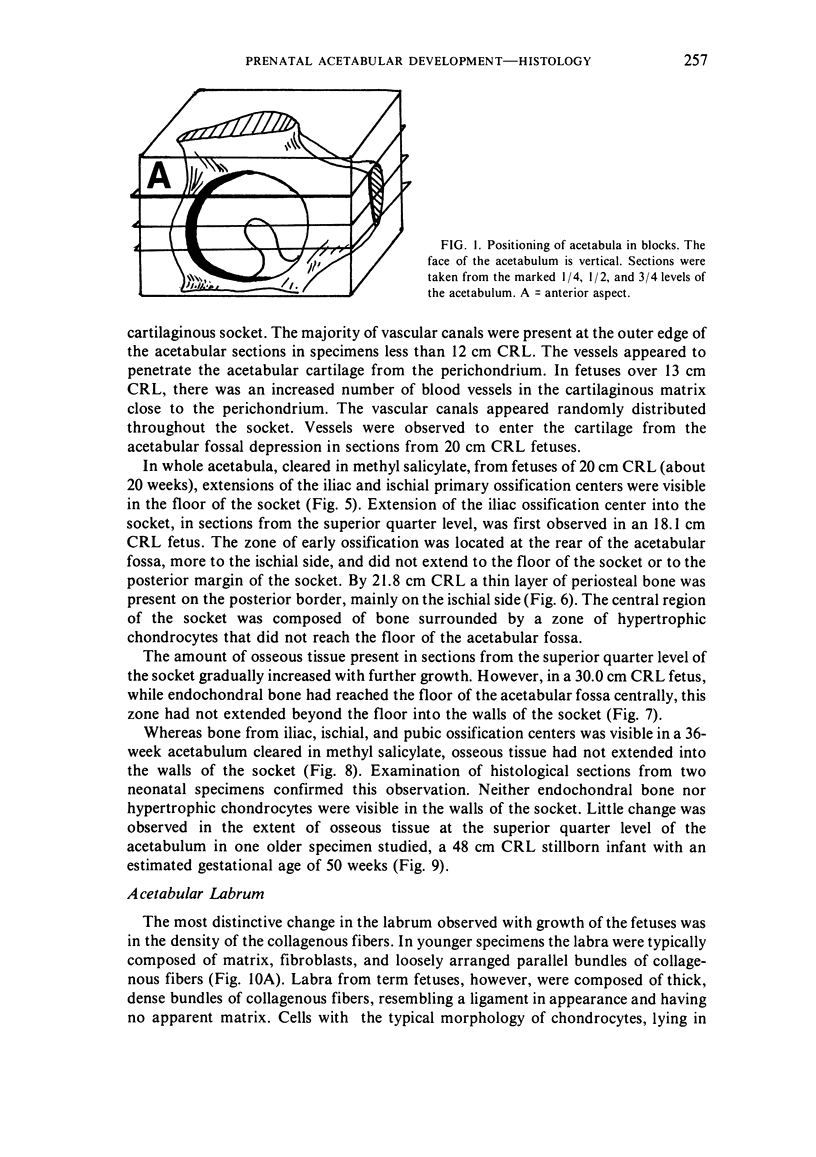
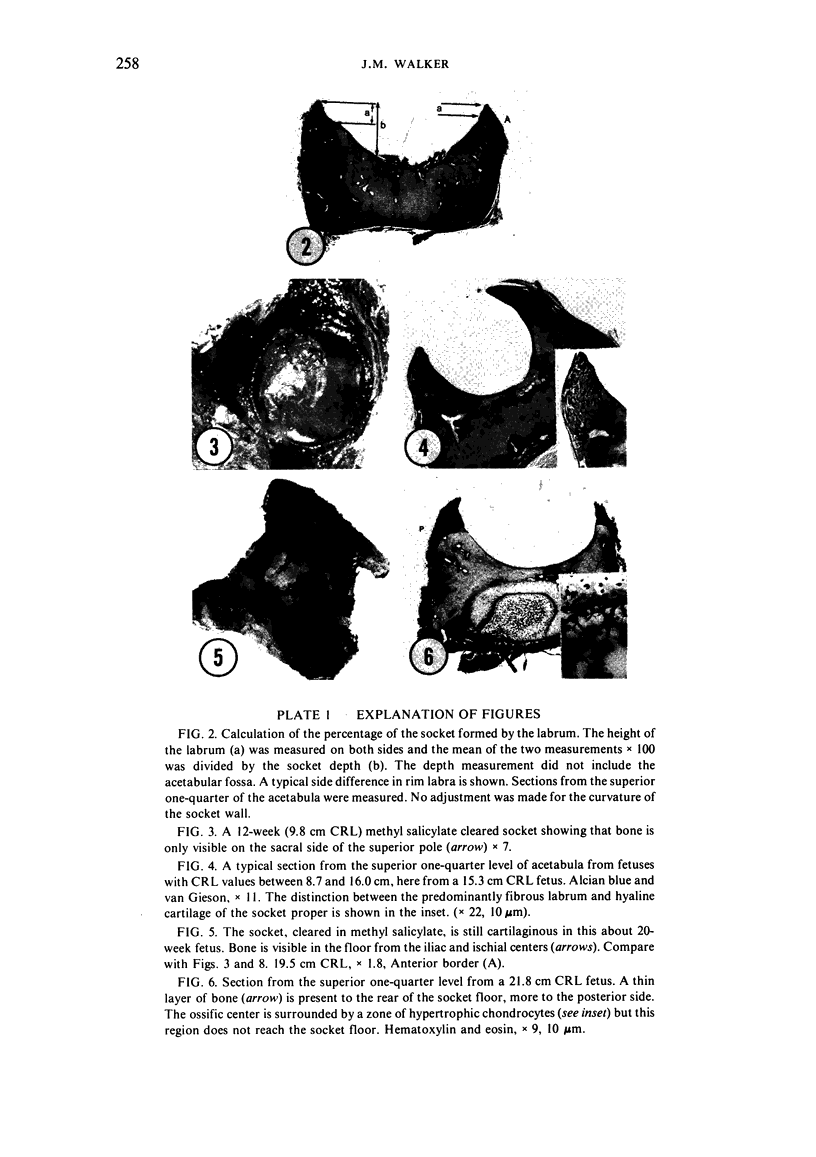
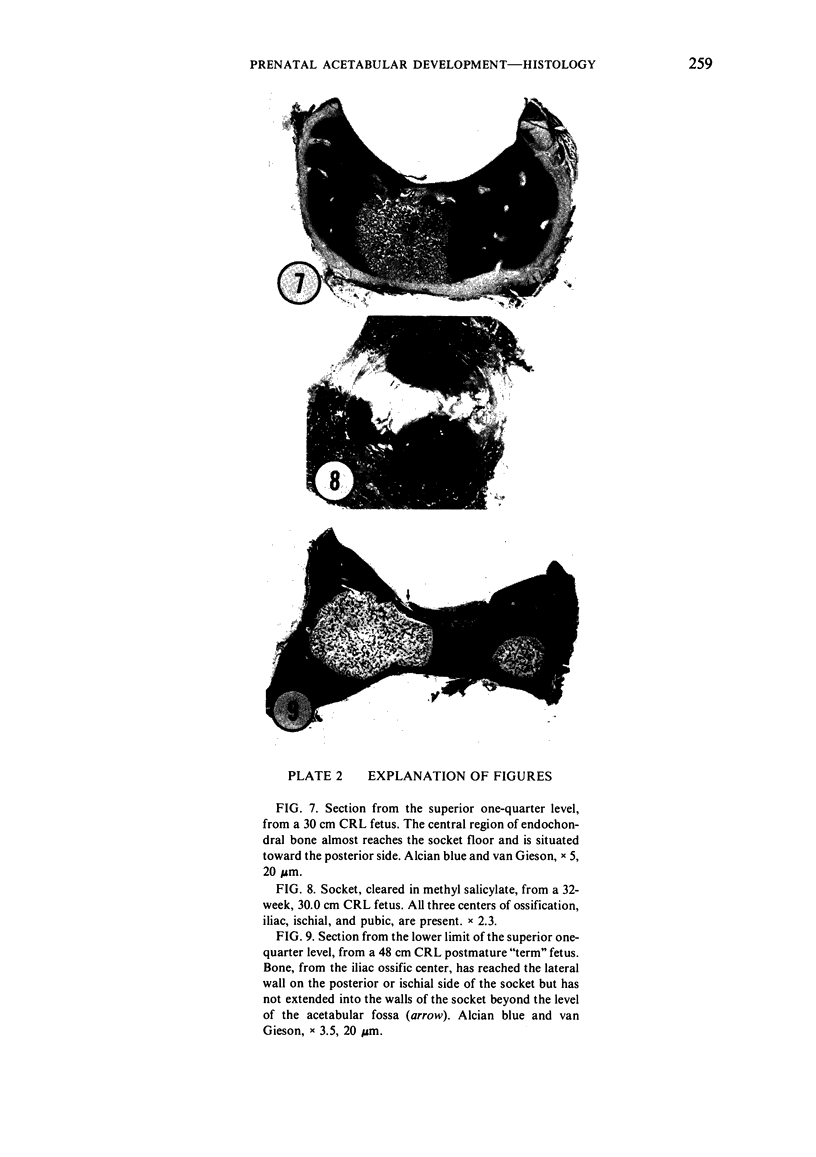
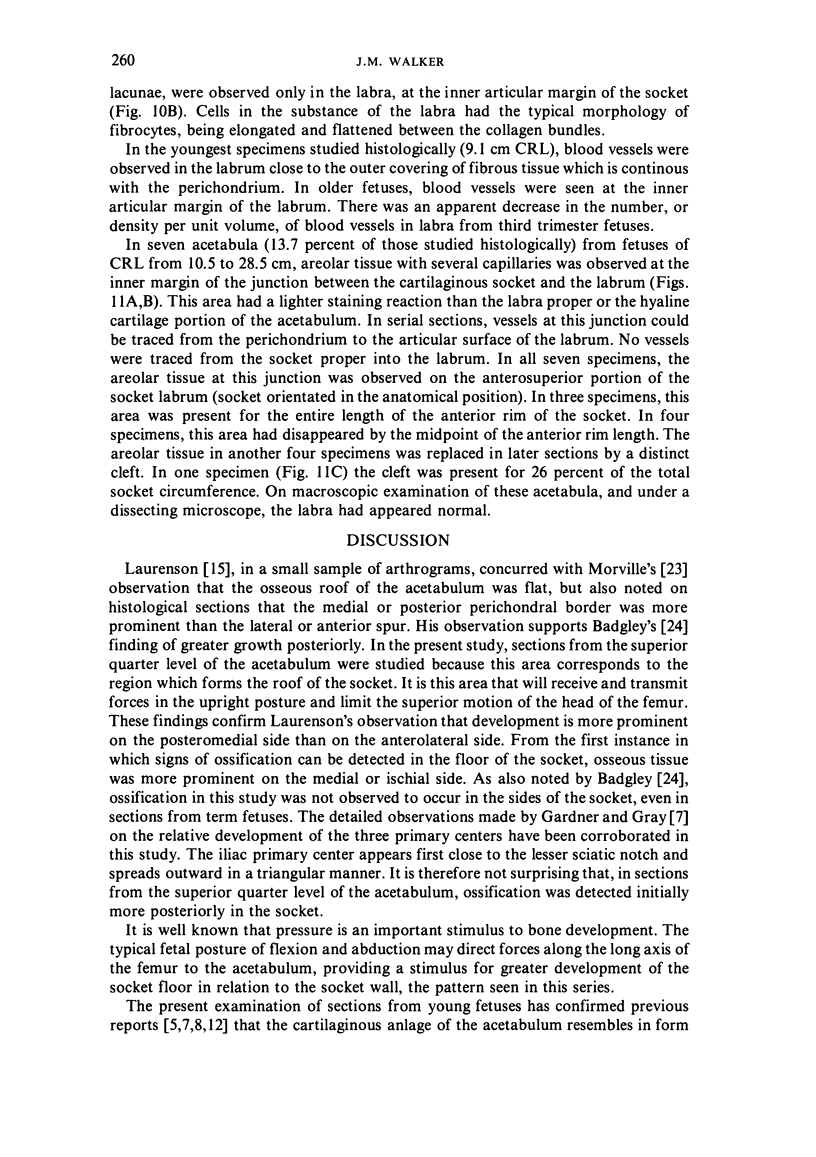
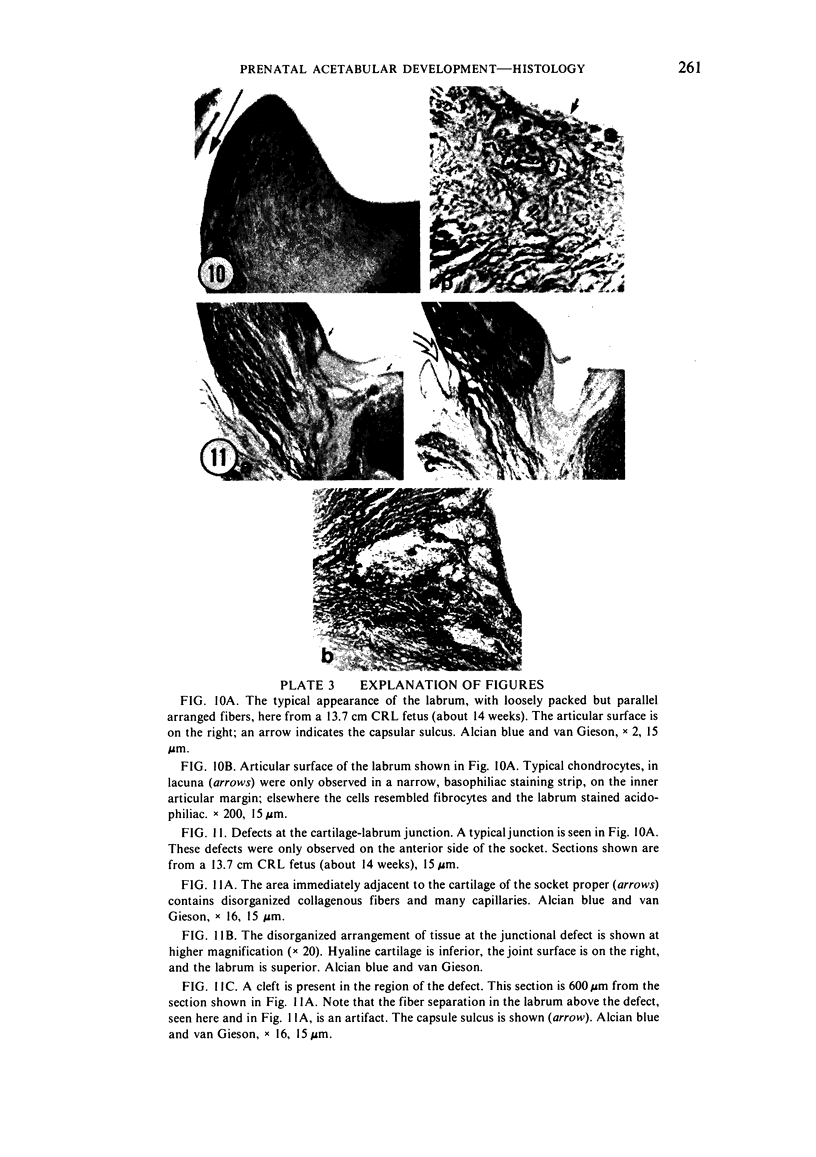
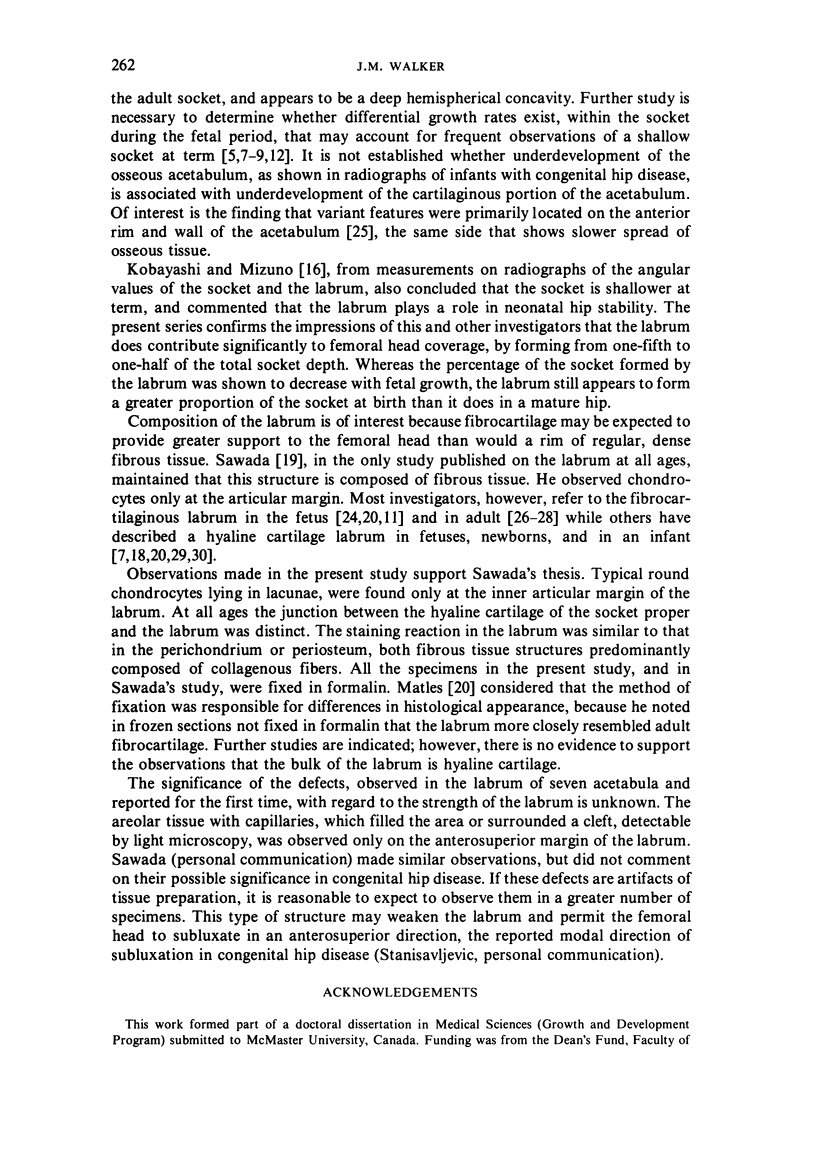
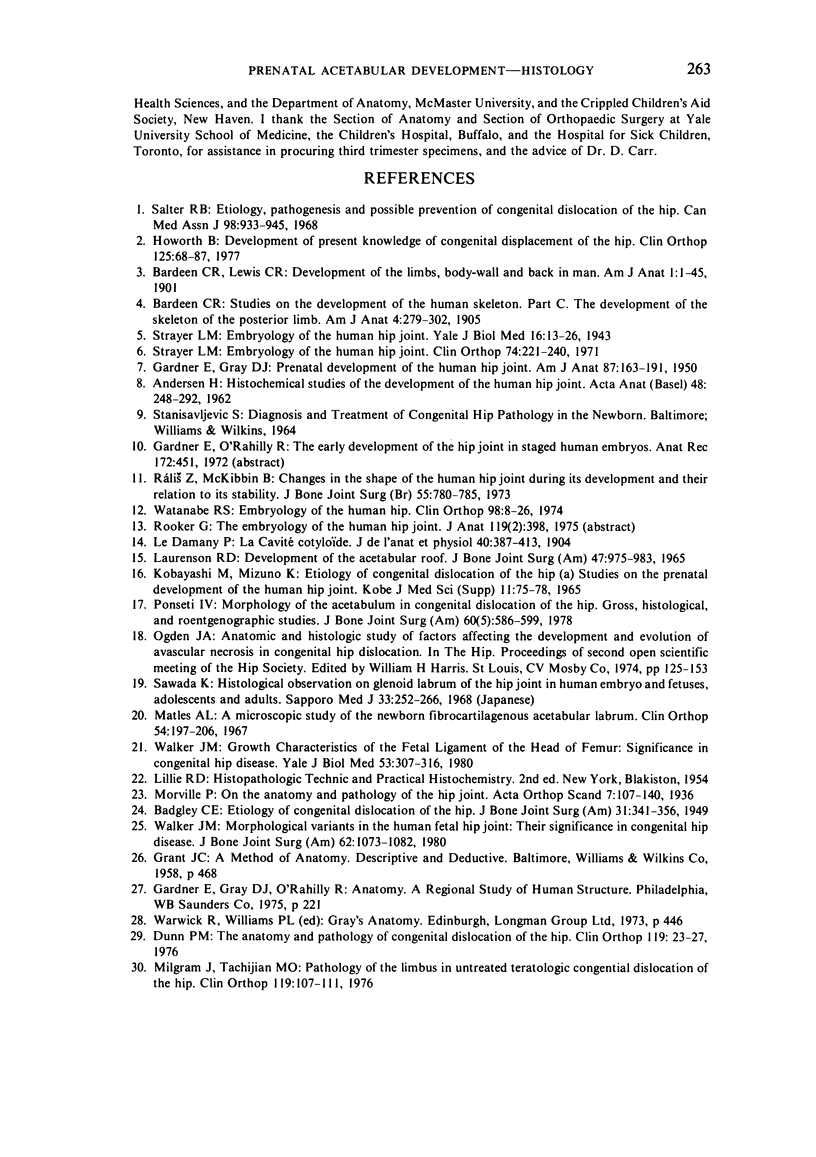
Images in this article
Selected References
These references are in PubMed. This may not be the complete list of references from this article.
- ANDERSEN H. Histochemical studies of the development of the human hip joint. Acta Anat (Basel) 1962;48:258–292. doi: 10.1159/000141844. [DOI] [PubMed] [Google Scholar]
- BADGLEY C. E. Etiology of congenital dislocation of the hip. J Bone Joint Surg Am. 1949 Apr;31A(2):341–356. [PubMed] [Google Scholar]
- Dunn P. M. The anatomy and pathology of congenital dislocation of the hip. Clin Orthop Relat Res. 1976 Sep;(119):23–27. [PubMed] [Google Scholar]
- GARDNER E., GRAY D. J. Prenatal development of the human hip joint. Am J Anat. 1950 Sep;87(2):163–211. doi: 10.1002/aja.1000870202. [DOI] [PubMed] [Google Scholar]
- Howorth B. Development of present knowledge of congenital displacement of the hip. Clin Orthop Relat Res. 1977 Jun;(125):68–87. [PubMed] [Google Scholar]
- Kobayashi M., Mizuno K. Etiology of congenital dislocation of the hip. Kobe J Med Sci. 1965 Dec;11(Suppl):75–78. [PubMed] [Google Scholar]
- LAURENSON R. D. DEVELOPMENT OF THE ACETABULAR ROOF IN THE FETAL HIP; AN ARTHROGRAPHIC AND HISTOLOGICAL STUDY. J Bone Joint Surg Am. 1965 Jul;47:975–983. [PubMed] [Google Scholar]
- Matles A. L. A microscopic study of the newborn fibrocartilagenous acetabular labrum. Clin Orthop Relat Res. 1967 Sep-Oct;54:197–206. [PubMed] [Google Scholar]
- Milgram J. W., Tachdjian M. O. Pathology of the limbus in untreated teratologic congenital dislocation of the hip. A case report of a ten-month-old- infant. Clin Orthop Relat Res. 1976 Sep;(119):107–111. [PubMed] [Google Scholar]
- Ponseti I. V. Morphology of the acetabulum in congenital dislocation of the hip. Gross, histological and roentgenographic studies. J Bone Joint Surg Am. 1978 Jul;60(5):586–599. [PubMed] [Google Scholar]
- Rális Z., McKibbin B. Changes in shape of the human hip joint during its development and their relation to its stability. J Bone Joint Surg Br. 1973 Nov;55(4):780–785. [PubMed] [Google Scholar]
- Salter R. B. Etiology, pathogenesis and possible prevention of congenital dislocation of the hip. Can Med Assoc J. 1968 May 18;98(20):933–945. [PMC free article] [PubMed] [Google Scholar]
- Sawada K. Histological observation on glenoid labrum of the hip joint in human embryos and fetuses, adolescent and adults. Sapporo Igaku Zasshi. 1968 Apr-May;33(4):252–266. [PubMed] [Google Scholar]
- Strayer L. M., Jr Embryology of he human hip joint. Clin Orthop Relat Res. 1971 Jan;74:221–240. [PubMed] [Google Scholar]
- Strayer L. M. The Embryology of the Human Hip Joint. Yale J Biol Med. 1943 Oct;16(1):13–26.6. [PMC free article] [PubMed] [Google Scholar]
- Walker J. M. Growth characteristics of the fetal ligament of the head of femur: significance in congenital hip disease. Yale J Biol Med. 1980 Jul-Aug;53(4):307–316. [PMC free article] [PubMed] [Google Scholar]
- Walker J. M. Morphological variants in the human fetal hip joint. Their significance in congenital hip disease. J Bone Joint Surg Am. 1980 Oct;62(7):1073–1082. [PubMed] [Google Scholar]
- Watanabe R. S. Embryology of the human hip. Clin Orthop Relat Res. 1974 Jan-Feb;(98):8–26. doi: 10.1097/00003086-197401000-00003. [DOI] [PubMed] [Google Scholar]






